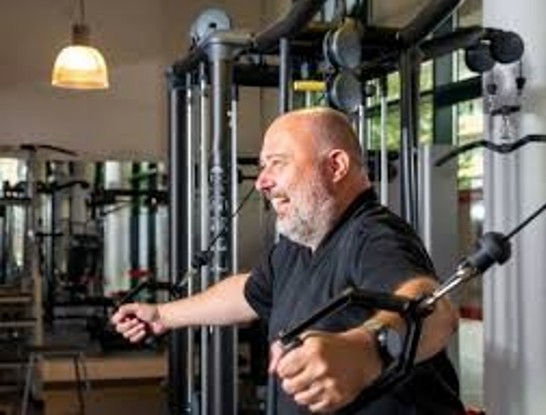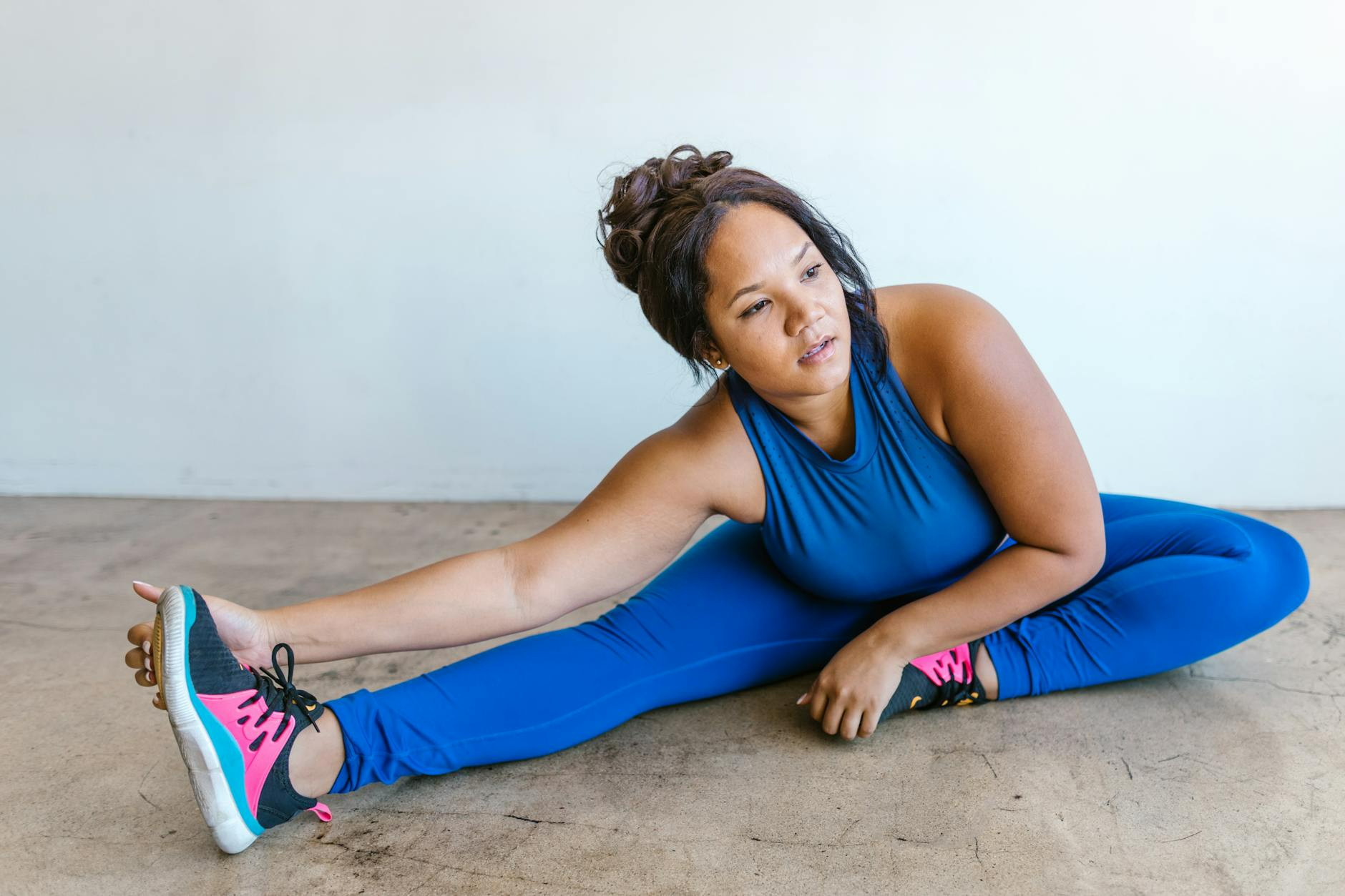Welcome to Tim's Health Hub
Here You Will Find The Best Tips To Improve Your Physical Health

Stay tuned for updates!


Top Five Weight Exercises for Men Over 40
As individuals age, maintaining muscle strength and bone density becomes increasingly important, especially for those over 40. Weight exercises are crucial in promoting overall health, enhancing balance, and preventing age-related muscle loss. Here are five effective weight exercises that are particularly beneficial for individuals over 40, focusing on safety and maximizing results.
**1. Squats:** Squats are fundamental for strengthening the lower body, targeting the quadriceps, hamstrings, glutes, and calves. For those over 40, squats can help improve mobility and stability while also promoting joint health. It's essential to maintain proper form to avoid injury: keep the feet shoulder-width apart, back straight, and knees aligned with the toes. Beginners might start with bodyweight squats, gradually incorporating dumbbells or a barbell as they build strength. Squats also engage the core, making them an excellent compound exercise for overall fitness.
**2. Deadlifts:** Deadlifts are another compound exercise that works multiple muscle groups, including the back, glutes, hamstrings, and core. For those over 40, deadlifts can be particularly beneficial for improving posture and enhancing functional strength. It's crucial to focus on form to prevent injury: keep the back straight, shoulders back, and lift with the legs rather than the back. Begin with lighter weights and increase gradually as strength and technique improve. Deadlifts not only enhance physical strength but also contribute to better balance and coordination.
**3. Bench Press:** The bench press is a classic exercise for building upper body strength, targeting the chest, shoulders, and triceps. For individuals over 40, incorporating the bench press can help maintain muscle mass and improve upper body endurance. It's important to start with a manageable weight and have a spotter when using heavier weights to ensure safety. Proper technique involves lowering the barbell to the mid-chest level and pressing it back up in a controlled manner. Variations such as incline or decline bench presses can also be included to target different muscle areas.
**4. Rows:** Rowing exercises are vital for strengthening the upper back, shoulders, and arms, and can greatly enhance posture and reduce the risk of back pain, which becomes more common with age. Bent-over rows or seated rows with dumbbells, barbells, or a rowing machine can all be effective. The key is to maintain a straight back and engage the core throughout the movement to avoid strain. Regularly performing rows can improve overall upper body strength and help prevent the slouching often associated with aging.
**5. Planks:** While not a traditional weightlifting exercise, planks are a highly effective bodyweight exercise that strengthens the core, shoulders, and back. For those over 40, strong core muscles are essential for stability and balance, reducing the risk of falls and injuries. The plank position involves holding the body in a straight line from head to heels, supported on the forearms and toes. Start with short durations and gradually increase the time as strength improves. Planks can be modified by adding leg lifts or side planks to increase difficulty and engage additional muscle groups.
Top Five Stetching Exercises for Men Over 40
As people age, maintaining flexibility and mobility becomes increasingly important to support overall health and prevent injuries. Stretching exercises can play a vital role in keeping muscles limber and joints flexible. Here are five top stretching exercises recommended for individuals over 40, along with their benefits and instructions.
1. **Hamstring Stretch**: The hamstring stretch is essential for maintaining flexibility in the back of the thighs and preventing lower back pain. To perform this stretch, sit on the floor with one leg extended straight and the other bent, with the sole of your foot against the inner thigh of the extended leg. Slowly reach forward towards the ankle of the extended leg, keeping your back straight and breathing deeply. Hold the position for 20-30 seconds and switch legs. This stretch helps improve flexibility and reduces the risk of injuries related to tight hamstrings.
2. **Cat-Cow Stretch**: This gentle yoga-inspired stretch is excellent for maintaining spinal flexibility and relieving tension in the back. Begin on your hands and knees, ensuring your wrists are aligned under your shoulders and knees under your hips. Inhale, arch your back, and lift your head and tailbone towards the ceiling (Cow Pose). Exhale, round your back, tuck your chin to your chest, and draw your belly button towards your spine (Cat Pose). Repeat this sequence for 10-15 cycles, focusing on breathing deeply. This stretch helps improve posture, increase spinal flexibility, and alleviate back pain.
3. **Chest Opener Stretch**: As people age, it's common for the chest and shoulder muscles to become tight, especially for those who spend long periods sitting. The chest opener stretch counteracts this and helps improve posture. Stand with your feet shoulder-width apart, interlace your fingers behind your back, and straighten your arms. Gently lift your arms while keeping your chest open and shoulders down. Hold for 20-30 seconds while breathing deeply. This stretch effectively opens up the chest, reduces shoulder tension, and promotes better posture.
4. **Hip Flexor Stretch**: Tight hip flexors can lead to discomfort and contribute to lower back issues. To stretch these muscles, start in a lunge position with your right foot forward and left knee on the ground. Keep your right knee directly above your ankle. Gently press your hips forward while maintaining an upright torso until you feel a stretch in the left hip flexor. Hold for 20-30 seconds, then switch legs. This stretch helps improve hip mobility, reduce lower back strain, and enhance overall lower body flexibility.
5. **Side Stretch**: Maintaining flexibility in the side body is important for overall mobility and balance. To perform a side stretch, stand with your feet shoulder-width apart and raise your right arm overhead. Lean to the left, feeling a stretch along the right side of your body. Keep your hips stable and avoid leaning forward or backward. Hold for 20-30 seconds, then switch sides. This stretch helps lengthen the muscles along the sides of the torso, improves balance, and enhances flexibility in the oblique muscles and intercostal muscles between the ribs.
Incorporating these stretches into a regular fitness routine can help individuals over 40 maintain their flexibility, reduce the risk of injury, and enhance overall mobility. It's important to perform each stretch gently and avoid pushing to the point of pain. Consistency is key, and with regular practice, these stretches can contribute to a healthier, more active lifestyle.